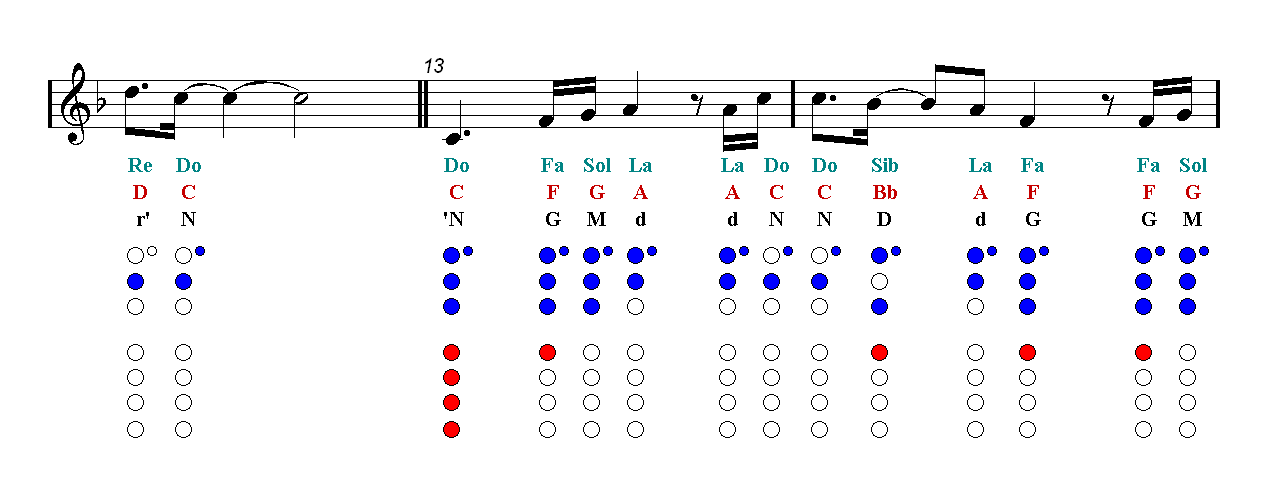
Your heart then more fully engages with your music. However as facility grows, technical challenges diminish. I still feel the same way about his music, along with countless others since it first appeared, over three hundred years ago.īeginning players struggle with technique, with little else to consider. I felt a deep emotional connection to his music, despite how poorly I no doubt played it back then. The heart is involved.Īs a beginning recorder student, I well remember encountering the works of Corelli. Has music ever raised a prickle on the back of your neck? Emotions are being conveyed through the mechanical actions of playing. The various tasks for breath, fingers, tongue, ears and eyes are mechanical ones, they combine to make recorder music.
#A note recorder professional
Professional players usually have remarkable sight reading facility.

Paying close attention to music scores is a learned skill, likewise "sight reading", where an unknown piece on a printed page becomes music.

Music enters through the eyes, is produced by breath, fingers and tongue, and is monitored by the ears. So, learning recorder also means learning to read music. Recorder is different, almost all players read their parts. Some instruments, the harmonica for example, are based around improvised playing, without printed notation. Your ears should hear less of your instrument, more of the others.

Beginning players are usually absorbed in their own sound, this needs to change for successful group playing. Success with these endeavours depends on where the ears are focussed. A key milestone for the recorder student is joining other players, often recorders, also piano, guitar, violin etc. In particular, your ears determine how well you play with others. Training your ears to discern music is an integral part of learning recorder. Your ears tell what is right, what is not. As a developing recorder player, you will become skilled at using your tongue to express your music. The tongue steps in to help, variations in articulation, long, short, very short gives the appearance of a dynamic range. The recorder has a small dynamic range, any given note cannot be much louder or softer than it already is. Your tongue already has key aspects of recorder technique under control. Repeat the words "he shredded it", notice the tongue taps the top the mouth three times, in rapid succession. Even if you have never played, your tongue is skilled. The tongue acts as a switch, turning the air on and off, likewise the notes. While the fingers make the notes, the tongue determines when they start and end. Getting this opening just right is a major part of recorder technique. The left thumb covers a single hole on the back of the recorder, this hole is opened or "cracked" a small amount to get the high notes. Many recorder notes are "cross fingered", meaning some fingers go up while others go down when moving between adjacent notes. However for high quality hand made wooden recorders, cutting the holes just right and the subsequent fine adjustments to each one requires a master craftsman. This lack of moving parts means that reasonable quality plastic recorders can be mass produced at low cost. Most wind instruments have keys, the recorder just has holes, covered in various combinations to make the notes. The breath makes the sound, the fingers choose the notes. The recorder essentially needs a light but extremely steady air flow. For any given note, raising the breath pressure also raises the pitch, sending the instrument out of tune. The low notes are unstable if the breath pressure is too high, the high notes don't work if the breath pressure is too low. Each recorder note has an optimal breath pressure. While there are particular ways to hold the recorder in your mouth, a specific embrouchure is not needed. This is why children get noise from a recorder straight away, unlike other wind instruments. All you do is blow into the mouthpiece, the inner workings make the sound. Instruments like flute, trumpet, saxophone have an "embouchure", a particular mouth shape needed to play the instrument. Likewise for any wind instruments, of course, however breath for the recorder is uniquely different. All recorder music, good and bad, comes from blown air. Recorder playing involves breath, fingers, tongue, ears, eyes.

#A note recorder how to
Here we discuss key elements of how to play the recorder. While recorder basics are easily grasped.


 0 kommentar(er)
0 kommentar(er)
